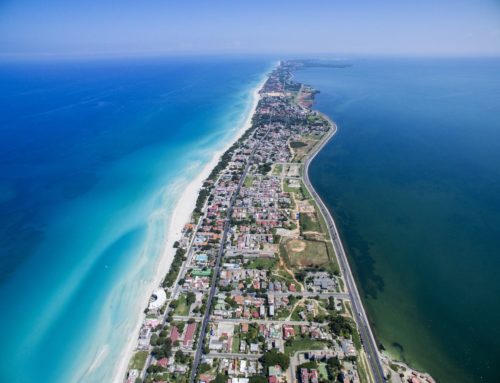Ecological Networks
As an ecology can be defined as the interaction between biotic and abiotic elements they are classical examples of complex networks
An ecological network is a map of the interaction between the biotic(and possibly abiotic) elements of an ecosystem, the classical example being a food web which is a network capturing the trophic interactions between the various species.1 Since the 1970s, when networks were imported from physics and social science into ecology, they have grown increasingly popular among ecologists and today offer a great potential for advancing our understanding of ecological processes, from the metabolic networks in our cells to the food webs within an ecosystem, to the global networks of animal migration. Network models are a powerful tool for quantifying how ecosystems work, network analysis can provide precise metrics that quantify community structure and models for analysing ecosystem resiliency and stability in a formal and rigorous fashion.
Ecological Networks
A network contains nodes and links between these nodes, an ecological node may represent an individual plant or animal, a whole population or species. Interactions between them can take many forms, but are generally divided into antagonistic trophic interactions, what are called food webs with interactions such as that between predator and prey, or mutualistic symbiotic interactions such as that between pollinator insect and flowering plant. Network structure describes patterns and structures within the overall ecological network. Here we are asking such questions as how many nodes are there in the network? And how connected is the overall network? The overall level of connectivity to a network is a primary factor determining the nature of any network, in ecology this is called connectance. Connectance is a measure of the number of links or connections between species expressed as a proportion of maximum connectance. This will also tell us something about linkage density which is the average number of links per species. For any given creature their degree can define how much of a generalist or specialist the species is within the food web, both in its role as a consumer and as a resource.
Clustering
Previous network analytical studies have revealed that ecological networks exhibit the important characteristic of clustering that is found in many different networks. Clustering or modularity describes to what extent the network can be divided into non-overlapping groups of highly interacting species within their local neighbourhood in the network. A module or cluster then is a set of species that have a disproportionate number of connections within their module as opposed to connecting to other modules. Food webs within a number of different ecosystems exhibit prominent clustering. The food web structure and subweb frequency distribution for parks, estuaries, lakes, and coral reefs, have been shown to all exhibit a high clustering coefficient.
Degree Distribution
More recently attention has shifted from network connectance to the idea of degree distribution. Degree distribution is a measurement to the variability in linkage density. It is asking about how equally or unequally the connections are distributed out within the system. For example cuala are very specialized feeders, feeding on a very few species of eucalyptus, whereas raccoons feed on a wide variety of species, 17 birds or eggs, crayfish, plants and various invertebrates, thus they would have many more connections within the food web as consumers.
Degree distribution goes a long way to telling us how centralized or distributed the network is. Centralized networks are those with a very high degree distribution having few central hubs with a very many connections while many other nodes have very few links, this may also give us what is called a scale free network, which are surprisingly common in our world. For example the metabolic network of a biological cell follows this centralized scale free model, where the essential molecules of ADP and ATP that provide the energy to fuel the cell, play a central role in interacting with a very many different other molecules thus forming hubs in the metabolic network. But equally we can find distributed networks that have a low degree distribution where the connections are distributed out relatively evenly across the network.
Centrality
Sea stars like this one are an important keystone species in tide pools as they eat sea urchins, mussels, and other shellfish that have no other natural predators.
Centrality is a measurement of how central a node is within a network and thus how significant it is within the system. A species with a high centrality measure within an ecosystem would be called a keystone species. Keystone species are generally understood as those species that play a role disproportionate to their numbers in the dynamics of their ecology. A classic keystone species is a predator that prevents a particular herbivorous species from eliminating dominant plant species. Since the prey numbers are low, the keystone predator numbers can be even lower and still be effective. Yet without the predators, the herbivorous prey would explode in numbers, removing all the dominant plants, and dramatically alter the dynamics of the ecosystem.
Another more concrete example of a keystone species would be a beaver. Beavers can engineer whole wetland ecosystems in their capacity to build and maintain dams, which have a major effect on the environment in that they can transform the territory from a stream to a pond or swamp, which define a different set of biotic and abiotic elements and interactions. As such these keystone species are described as playing a critical role in maintaining the structure of an ecological community and we could stay they have a high centrality measure within that network.
Measures
The centrality of a node within an ecological network is quite a complex metric to define as it is a product of a number of different factors, such as how connected that node is, that is to say the immediate connections it has with other nodes, either as producer or consumer of some resource. Equally we need to think about how critical that creature is to the network, do they serve some role that no other node in the network could perform and thus they form what is called a bridging link, without other redundant components to fill this role they can be critical to the ecological network not because of the number of links they have but instead because of their uniqueness and irreplaceability.
We can also note that critical ecosystem processes will not always be under the control of individual species, but may be mediated nonetheless by a small set of species that thereby form a keystone functional group. For example, the groups of microbial species that fix nitrogen can control processes that play a fundamental role in the persistence of an ecosystem. With their high influence on the system keystone species can trigger nonlinear responses that lead to cascades of local or global change in the formation of the ecosystem. More generally we may also have abiotic critical elements in the system, such as the level of precipitation, PH level of the soil or other geological factors that form critically sensitive values within the network.
Network Integrity & Resiliency
Network analysis is an important tool for modelling the resiliency of an ecosystem in terms of the integrity to its network of connections. Connectivity within networks can both enable robustness but also represent pathways for disaster spreading, it works both ways. On the beneficial side the resiliency and robustness of the network can be correlated to the flow through the system as described by the theory of ascendency. Where ascendency is defined as the level of functionality to the ecosystem’s trophic network. One way of interpreting ascendency is to regard it as the organized structure of connections that enables resources to flow through the network, the magnitude of the power that is flowing within the system towards particular ends. As such ascendency is a key index in determining the ability of an ecosystem to prevail against disturbance by virtue of its combined organization, connectivity and size.
This can be illustrated by analogy to the difference between a living and dead organism, which may be interpreted as simply the volume of resources flowing through that system, the greater the flow, the greater the vitality, meaning more ascendency. Thus we can use network theory to analyse how integrated the network carrying the resources is and this will give us one interpretation to the robustness of the ecosystem on aggregate, this network integrity is traditionally understood in term of habitat fragmentation.
Habitat Fragmentation
Ecosystem fragmentation involves the disintegration process within the ecology due to compartmentalization
Habitat fragmentation describes the emergence of discontinuities or fragmentation in an organism’s native environment, causing population fragmentation and ecosystem decay. It is a process during which a large expanse of habitat is transformed into a number of patches of a smaller total area, isolated from each other by a set of habitats unlike the original. It increases discontinuity in the spatial patterning of resource availability, affecting the conditions for species occupancy, and ultimately individual fitness. Fragmentation can arise via both natural and anthropogenic processes in terrestrial and aquatic systems. Connectivity among fragments, the characteristics of the matrix, the availability of corridors for movement between fragments, and the permeability and structure of habitat edges are all important in this context and affect the structure, persistence and strength of the ecological network.
Food Web Disturbances
In the same way that connectivity can enable ascendency and robustness, it can also enable large food web disturbances in the form of cascades. As food webs become more interconnected this creates more pathways for disaster spreading and cascading effects. An ecological cascade effect is a series of secondary extinctions that is triggered by the primary extinction of a key species in an ecosystem. Secondary extinctions are likely to occur when the threatened species are dependent on a few specific food sources or some other mutualistic interaction.
One example of the cascade effect caused by the loss of a top predator is related to the sea otters. Starting before the 17th century sea otters were hunted extensively for their pelts, their decline caused a cascade effect through the kelp forest ecosystems along the Pacific Coast of North America. One of the sea otters’ primary food sources is the sea urchin. When hunters caused sea otter populations to decline, an ecological release of sea urchin populations occurred. The sea urchins then overexploited their main food source, kelp, creating ecological collapse in those areas. No longer having food to eat, the sea urchin populations became locally extinct as well. Also, since kelp forest ecosystems are homes to many other species, the loss of the kelp ultimately caused their extinction as well. Thus the loss of sea otters caused a cascade effect of secondary extinctions due to the interconnectivity within the system.




























